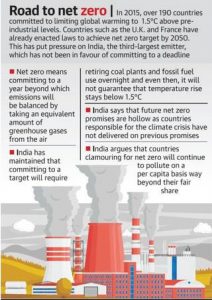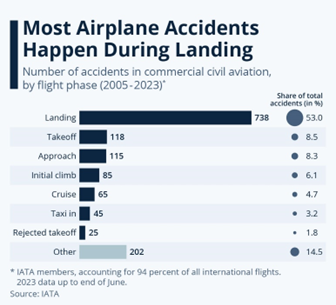INDIAN POLITY, GOVERNANCE AND SOCIAL JUSTICE
1. SAKSHAM CENTRES
THE CONTEXT: A total of 152 Centre for Financial Literacy & Service Delivery (SAKSHAM Centres) across 77 districts of 13 states launched under Deendayal Antyodaya Yojana – National Rural Livelihoods Mission (DAY-NRLM) of the Ministry of Rural Development.
THE EXPLANATION:
- Centre for Financial Literacy & Service Delivery (CFL&SD) would act as one stop solution/single window system for the basic financial needs of Self-Help Group (SHG) households in rural areas.
- The main objective of the center is to provide financial literacy & facilitate delivery of financial services (savings, credit, insurance, pensions etc.) to SHG members and rural poor.
- These Centers will be managed by SHG network, largely at the level of the Cluster Level Federations (CLFs), with the help of trained Community Resource Persons (CRPs).
- Ministry of Rural Development (MoRD) has also developed a mobile & web-based application called “SAKSHAM” which will be used by the community resource person of the Centre to know the penetration of various financial services for each SHG & village, identify major gaps and accordingly provide training and deliver the required financial services.
- This application will also measure the impact of the programme on regular interval for mid-course correction in strategy, if any.
SOURCE: PIB
2. WINTER SESSION OF PARLIAMENT
THE CONTEXT: The month-long winter session of Parliament is likely to commence from the fourth week of November.
THE EXPLANATION:
- The session, which is likely to have around 20 sittings, would conclude ahead of Christmas.
- In the wake of the pandemic, the winter session of Parliament was not held last year and all the subsequent sessions — Budget and Monsoon — were curtailed due to Covid.
- Though, an official decision has not been taken yet, the sources said the session could commence from November 29 and would end around December 23.
SOURCE: PIB
ENVIRONMENT, GEOGRAPHY AND AGRICULTURE
3. MIGRATORY AMUR FALCONS REACH MANIPUR
THE CONTEXT: With the arrival of the migratory Amur falcons to Tamenglong district of Manipur for the annual stopover, State Forest and Environment Minister has appealed to the people not to hunt the seasonal visitors.
THE EXPLANATION:
- These falcons visit the district every year from breeding grounds in China and Russia before beginning their onward voyage to Africa for the winter — a journey of more than 30,000 km.
- The hunting of the bird was punishable under the Manipur Wildlife (Protection) Act, 1972 and could lead to three years of imprisonment and a fine of ₹25,000.
ABOUT LOKTAK LAKE
- The population of the brow-antlered deer (Sangai) found only in Manipur stood at fewer than 300 in its natural habitat, the 40 sq km Keibul Lamjao National park in Bishnupur district.
- The lake is located at Moirang (about 50 Km form Imphal) in Manipur, India.
- Loktak Lake is the largest freshwater lake in Northeast India and is famous for the phumdis (heterogeneous mass of vegetation, soil and organic matter at various stages of decomposition) floating over it.
- Keibul Lamjao National Park is located on one of the Phumdis in the lake and it is the only floating national park in the world.
- It is last natural refuge of the endangered Sangai (state animal) (critically endangered), or Manipur brow-antlered deer, one of three subspecies of Eld’s deer (or thamin).
- It was designated as a wetland of international importance in 1990 under Ramsar Convention.
SOURCE: TH
4. INDIA DOESN’T RULE OUT ‘NET ZERO’ COMMITMENT
THE CONTEXT: According to sources, India hasn’t entirely ruled out on the possibility of agreeing to a ‘net zero’ target
THE EXPLANATION:
- Though it will not budge on demands from developed nations on making good on previous commitments, such as an annual $100 billion to developing countries for mitigating the impacts of climate change, facilitating technology transfer and putting in place a tangible market-based mechanism to activate the moribund carbon credit markets.
- Ahead of the 26th meeting of United Nations’ Conference of Parties (CoP) that begins November 1 in Glasgow, the focus on making the meet a success is to have all nations commit to a ‘net zero’, or a year by when a country’s fossil fuel emissions would peak and at some point be neutralized by taking out excess carbon from the atmosphere.
- All countries doing this by 2050 would mean a chance of restricting average temperature rise to 1.5 Celsius provided emissions fall to around 45% of 2010 levels by 2030.

SOURCE: TH
5. PLASTIC POLLUTION IN AQUATIC SYSTEMS MAY TRIPLE BY 2040
THE CONTEXT: A new report by the United Nations Environment Programme (UNEP) has rung alarm bells: The amount of plastics in the oceans has been estimated to be around 75-199 million tonnes at present. Without meaningful action, emissions of plastic waste into aquatic ecosystems are projected to nearly triple by 2040.
THE EXPLANATION:
- The report flagged that under a business-as-usual scenario and in the absence of necessary interventions, the amount of plastic waste entering aquatic ecosystems could nearly triple from 9-14 million tonnes a year in 2016 to 23-37 million tonnes a year by 2040.
- Of the seven billion tonnes of plastic waste generated so far, an estimated 10 per cent was recycled, 14 per cent incinerated and the remaining 76 per cent went into landfills, dumps and littered in the natural environment.
- The estimated annual loss in the value of plastic packaging waste during sorting and processing alone is $80-120 billion.
- Plastics labelled as biodegradable may take hundreds of years to degrade in the oceans; litter poses similar risks to individuals, biodiversity and ecosystem functioning.
- The main sources of marine litter and plastic pollution are land-based. Approximately 7,000 million of the estimated 9,200 million tonnes of cumulative plastic production between 1950 and 2017 became plastic waste.
SOURCE: DTE
6. LIST OF ‘COUNTRIES OF CONCERN’ ON CLIMATE
THE CONTEXT: The United States has categorized India as a ‘country of concern’ along with 10 others that in the assessment of the American intelligence community will bear the brunt of global warming that could include intensifying and more frequent heatwaves and droughts and water and power scarcity.
THE EXPLANATION:
- The first-ever National Intelligence Estimate (NIE) on climate was put together by the US Office of the Director of National Intelligence, which oversee 16 intelligence agencies.
- The other countries on the list are Afghanistan, Guatemala, Haiti, Honduras, Iraq, Pakistan, Nicaragua, Colombia, Myanmar and North Korea.
- The IC (Intelligence Community) identified 11 countries and two regions of concern from the threat from climate change. Building resilience in these countries and regions would probably be especially helpful in mitigating future risks to US interests.”
- The report said the intelligence community assessed that these countries are likely to face warming temperatures, more extreme weather, and disruption to ocean patterns that will threaten their energy, food, water, and health security.
- Intensifying and more frequent heatwaves and droughts will in turn create water supply volatility and probably strain their electric utility operations while growing economies and populations will increase electricity demands to handle rising temperatures.
SOURCE: HT
INDIAN SECURITY
7. INDIA AMONG SELECT FEW COUNTRIES DEVELOPING HYPERSONIC MISSILES
THE CONTEXT: The independent Congressional Research Service (CRS) said that although the U.S., Russia and China possess the most advanced hypersonic weapons programmes, a number of other countries, including Australia, India, France, Germany and Japan, are also developing hypersonic weapons technology.
THE EXPLANATION:
- The Congressional report is prepared by independent subject area experts for members of the U.S. Congress.
- While Australia has collaborated with the U.S., India has collaborated with Russia on this.
- India has collaborated with Russia on the development of BrahMos II, a Mach 7 hypersonic cruise missile.
- India operates approximately 12 hypersonic wind tunnels and is capable of testing speeds of up to Mach 13.
- China tested the nuclear-capable hypersonic missile in August that circled the globe before speeding towards its target, demonstrating an advanced space capability that caught U.S. intelligence by surprise.
SOURCE: TH
INTERNATIONAL RELATIONS
8. INDIA-U.K. TIES VITAL IN COMING DECADES
THE CONTEXT: U.K. Foreign Secretary Elizabeth Truss said relation between the United Kingdom and India is vital over the coming decades. Ms Truss is on a three-day visit to India.
THE EXPLANATION:
- She is scheduled to be a special guest at a ceremony to mark the visit of the U.K. Carrier Strike Group in Mumbai (‘Konkan Shakti’ exercise).
- Truss said her visit would boost partnership, and pointed out technology and infrastructure, security and defence, and “building back after COVID” as the areas of collaboration between the two sides.
- Truss and Mr Jaishankar welcomed the progress in delivering the Enhanced Trade Partnership” that was announced at the India-U.K. virtual summit.
- Both Ministers agreed on the need for launching FTA negotiations at the earliest, with a focus on negotiating an interim agreement that can deliver quick gains to businesses in both India and the U.K.
ABOUT KONKAN SHAKTI
- Konkan Shakti is the first tri-service exercise between India and the United Kingdom.
- The tri-service exercise aims to derive mutual benefits from each other’s experiences and also showcase the continuing cooperation between the two countries.
- Maritime cooperation is a distinguishable symbol of the commitment of both nations in ensuring a positive climate at sea for enhancing strategic stability and promoting global economic prosperity.
SOURCE: TH
PRELIMS PRACTICE QUESTIONS
Q1. Consider the following statements:
- Loktak lake is located in Nagaland.
- It is famous for phumdis, floating organic matter.
- It is the last natural refuge of the Sangai.
Which of the statements given above are correct?
a) 1 and 2 only b) 2 and 3 only
c) 1 and 3 only d) 1, 2 and 3
ANSWER FOR OCTOBER 22, 2021 PRELIMS PRACTICE QUESTIONS
Answer: b)
Explanation:
- Statement 1 is correct: FATF is the global money laundering and terrorist financing watchdog.
- Statement 2 is incorrect: It was established by the G-7 Summit that was held in Paris in 1989.
- Statement 3 is correct: Its Secretariat is located at the OECD Headquarters in Paris.
- Statement 4 is incorrect: On June 25, 2010, India was taken in as the 34th country member of FATF. Therefore, India is not a founding member of FATF


